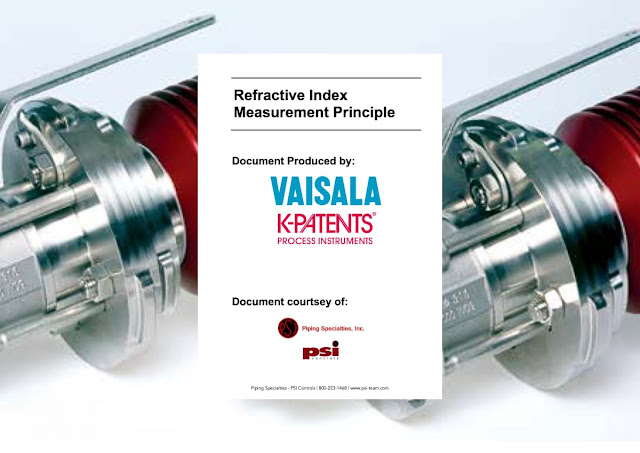The
recovery boiler plays a central role in the chemical cycle of a modern pulp mill. The recovery boiler is a chemical reactor, which is used for recovering chemicals from spent kraft liquor and generating energy at the same time.
In the recovery boiler, the organic matter is burned. The dry solids liquor content required for firing is at least 60 %, but preferably more than 65 %. Black liquor is concentrated by evaporating water from the liquor. When the concentration of black liquor is maximized, so is the energy production. Before entering the burners, sodium sulfate decahydrate, or glauber salt, is added to cover chemical losses.
Application
 |
Chemical curve: R.I. per Black
liquor Conc% at Ref. Temp. of 20 ̊C |
The liquor should have a high content of combustible dry solids in order to minimize flue gas emissions and maximize boiler efficiency.
Too low concentration of dry solids fed to the burners may result in a steam explosion with consequent damage or destruction to the boiler. Therefore, it is essential to utilize a
refractometer to monitor the black liquor feed to the recovery boiler to ensure a safe operation.
Instrumentation and installation
The
K-Patents Digital Divert Control System DD-23 complies strictly with all recommendations of the
Black Liquor Recovery Boiler Advisory Committee (BLRBAC).
The DD-23 system includes two SAFE-DRIVE Process Refractometer sensors in the main black liquor line, two indicating transmitters and a divert control unit in an integrated panel.
The sensors are installed using K-Patents patented SAFE-DRIVE Isolation valve. This allows for safe and easy insertion and retraction of the refractometers under full operating pressure, without having to valve off the liquor piping or having to shut down the process. The SAFE-DRIVE Isolation valve contains a steam wash system for automatic prism cleaning. The system contains a SAFE-DRIVE Retractor Tool SDR-23 for safe sensor insertion and retraction.
For more information about refractometers used on blacl liquor recovery boilers, contact Piping Specialties by calling 800-223-1468 or visit
https://psi-team.com.



